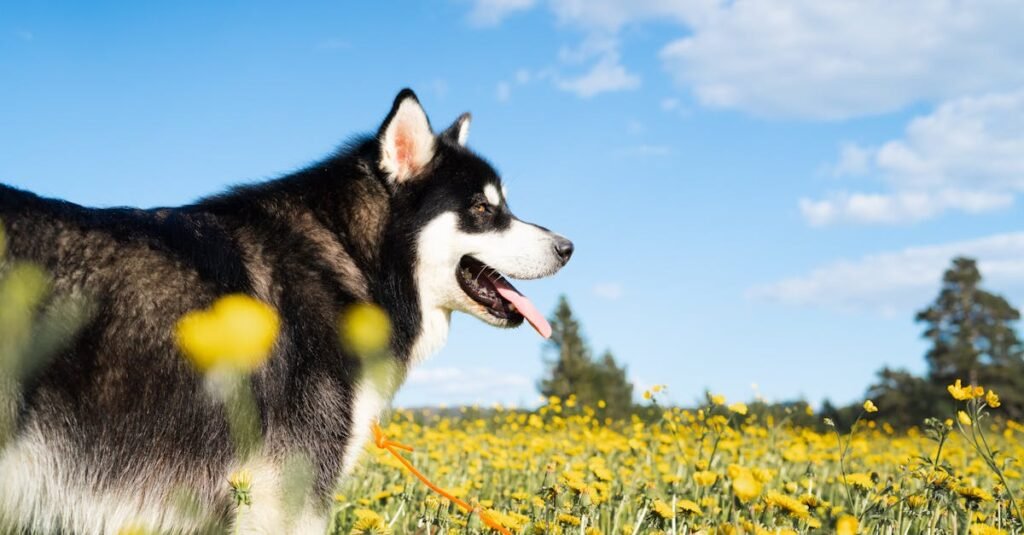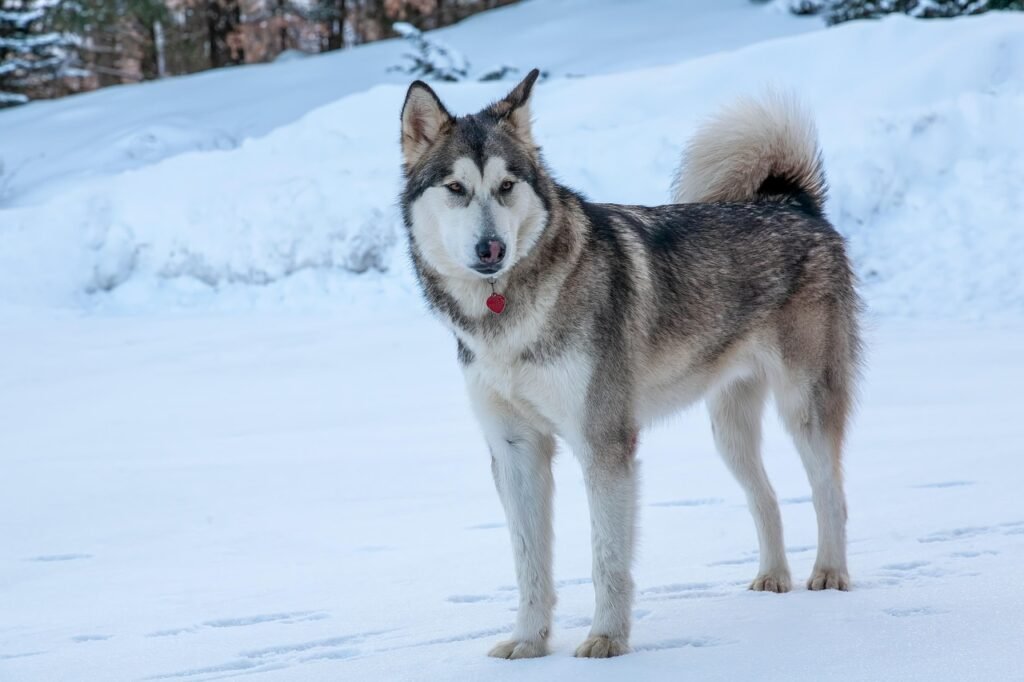Alaskan Malamute Dog Breed
The Alaskan Malamute is a powerful yet affectionate breed known for its strength, endurance and warm-hearted nature. Originally bred to survive and work in the unforgiving Arctic, Malamutes are loyal companions with an adventurous spirit. They make excellent family pets for owners who can meet their physical and mental needs.
1. HISTORY OF THE ALASKAN MALAMUTE
The Alaskan Malamute’s history stretches back more than 4,000 years to the Inuit Mahlemut people of northwestern Alaska. These dogs were bred to haul heavy sleds across long distances, assist in hunting large game such as seals and polar bears and provide companionship in isolated icy regions.
Their endurance and strength made them essential to survival in the Arctic. During the Gold Rush of the late 1800s, Malamutes were in high demand to transport supplies. Despite periods where other breeds were mixed in to meet the need for sled dogs, dedicated breeding programs in the 20th century helped preserve the Malamute’s original traits. Today they are valued as both working dogs and loving companions.
2. APPEARANCE
The Alaskan Malamute is a large, well-built dog with a thick double coat designed to withstand extreme cold. Males typically stand 25 to 28 inches tall and weigh 85 to 100 pounds while females are slightly smaller at 23 to 26 inches and 75 to 85 pounds.
Their coat comes in shades such as gray, black, sable and red, always with white on the face, belly, legs and tail tip. Many have a distinctive facial mask or cap. Their head is broad with erect triangular ears and dark almond-shaped eyes that radiate intelligence and warmth. The tail is plumed and carried in a gentle curve over the back, adding to their majestic look.
3. Personality and Temperament
Malamutes are known for being affectionate, outgoing and friendly with people. They form strong bonds with their families and are particularly good with older children who understand how to interact with large dogs.
Although loving, they are also independent thinkers with a stubborn streak, which means early training and firm but positive guidance are essential. Malamutes tend to get along well with humans but can be dominant with other dogs of the same sex. They also have a strong prey drive, so they may not be suited to homes with small animals unless raised together and closely supervised.
Their playful and social nature means they dislike being left alone for long periods. Without adequate interaction, they can become bored and may dig, howl or try to escape.

4. Care and Grooming
The Alaskan Malamute’s dense double coat consists of a coarse outer layer and a soft insulating undercoat. They shed year-round and have a heavy shedding period twice a year when they “blow” their coat. Brushing several times a week and daily during heavy shedding helps manage loose fur and keeps the coat healthy.
Bathing should be done only when necessary to avoid stripping the coat’s natural oils. Nails should be trimmed regularly, ears should be checked and cleaned, and teeth should be brushed several times a week.
Malamutes are highly active dogs that need daily exercise. Long walks, hikes, runs or pulling activities such as sledding, skijoring or carting help keep them fit and happy. Mental stimulation through training, puzzle toys and interactive play is just as important as physical activity.
5. Health Considerations
While generally hardy, Alaskan Malamutes can be prone to some health conditions:
-
Hip dysplasia — a hereditary condition that can lead to arthritis and mobility issues.
-
Hypothyroidism — a thyroid hormone deficiency that can cause weight gain, skin issues and lethargy.
-
Cataracts — clouding of the eye lens which may affect vision.
-
Bloat (Gastric Dilatation-Volvulus) — a serious condition that requires immediate veterinary attention.
Regular veterinary care, a nutritious diet and a healthy weight help reduce risks and support a long active life.
6. Alaskan Malamute as a Family Pet
Malamutes are affectionate, loyal and protective, making them wonderful family companions for the right home. They do best with experienced owners who can provide structure, leadership and plenty of daily exercise.
A large secure yard is ideal since they love to roam and explore. They are not well-suited to apartment living unless the owner can commit to multiple long walks and activities each day. Malamutes thrive in homes where they are included in family activities and where their need for both physical exertion and mental engagement is met.

7. Is the Alaskan Malamute Right for You?
If you are looking for a strong, adventurous and affectionate dog that enjoys outdoor activities and thrives in a family setting, the Alaskan Malamute could be the perfect match. They require time, training, grooming and space but in return they offer unwavering loyalty and companionship.
For owners willing to embrace their working spirit and high energy, a Malamute will be a devoted friend for many years.

